
A few blocks from Bernabela Ramos Park in Santa Cruz, the Promesano Indians form two lines. They are ready to begin the procession on January 14 that welcomes the Holy Black Christ of Esquipulas as he enters the town. White and yellow garlands are twisted across wires hung over the street.
Promesanos wear white and are laden with rings, bracelets, necklaces, and earrings. The men have a long stick in their hand and the women hold gourd bowls full of flowers. Year after year, they sing and dance to the Black Christ to give thanks for good harvests and to keep promises for fulfilled requests. That is where their name, “promesanos” (promisers), comes from.
Mary Espinoza begins to sing first, alone and loud, to guide those who don’t know the songs very well. She is 84 years old and is the longest-serving bearer of this tradition that is more than two centuries old.
Some people sing confidently, while others who are still hesitant decide not to raise their voices too loudly. The marimba player and the guitarist try to keep time with the melody without much success. They joined in on the preparations just three days ago, because the organizers had a hard time finding a marimba player available in the middle of Santa Cruz’s fiestas.
The dance of the Promesano Indians is one of the folkloric city’s oldest artistic and religious observances. People like Mary have been resilient in keeping the tradition alive to our day, but that doesn’t mean it’s in its prime. Its future is at risk due to trouble raising money for the dance and the tradition’s dependence on a few faithful volunteers.
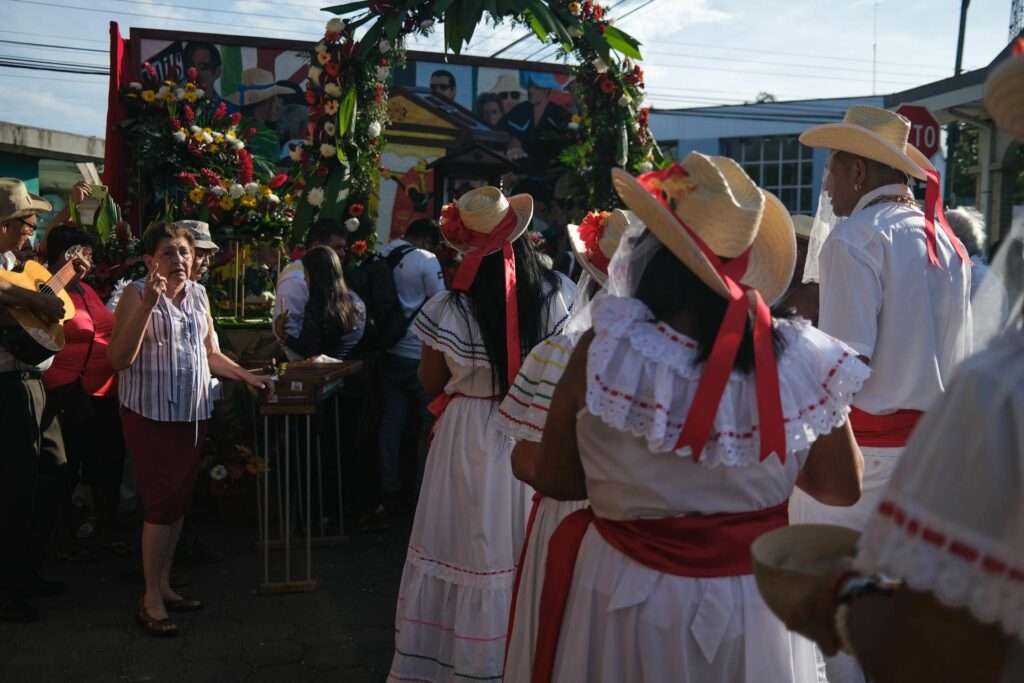
Mary Espinoza (left in striped shirt) leads the chants of the Indian promesanos in the procession of the Black Christ.Photo: Mari Arango
A Bicentennial Dance with Setbacks
Three days before the procession, the Promesano Indians gathered at the rectory to rehearse this year’s presentation for the first time.
At the gate of the rectory, where they rehearsed, a man was waiting for the almost 20 Promesanos who would perform this year to give them a donation of money that they needed to finish buying the costumes.
Those who were arriving asked if Mary was going to come to help them learn the songs that each couple should sing to Esquipulas. She had been feeling sick the last couple of days.
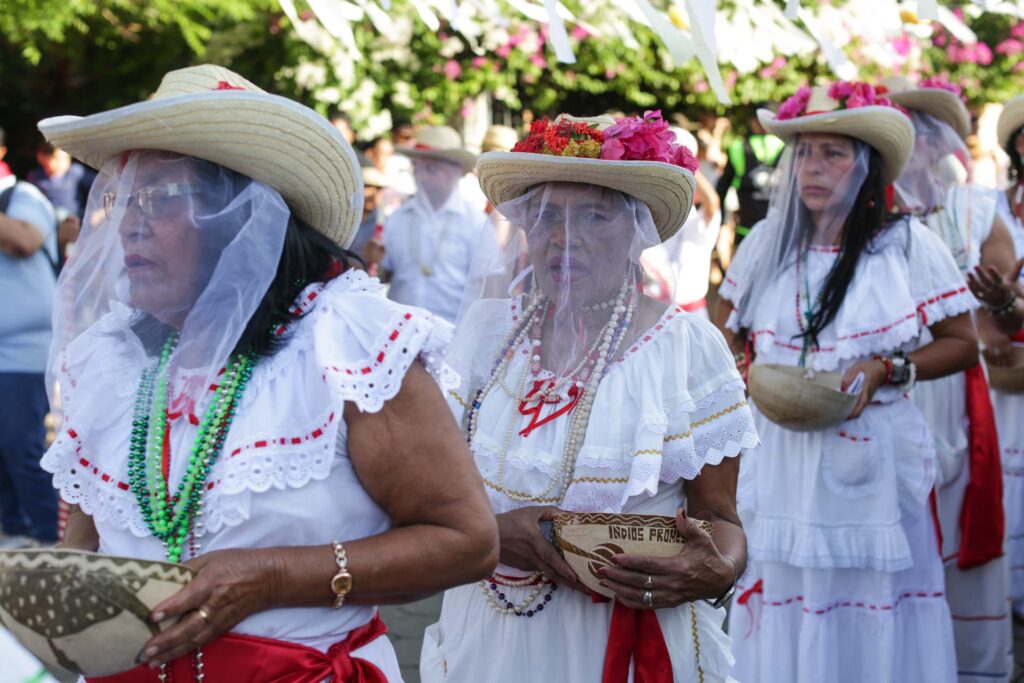
The dance of the Promesano Indians is an agricultural dance in which they thank the Christ of Esquipulas for the good harvests of the year.Photo: César Arroyo
Although many of the lyrics have been transcribed, she is the one who best knows the correct timing of the songs and the correct way to sing them. Participating in the dance of the Promesano Indians for 75 years has taught her enough to be able to pass on the tradition. During all that time, she has also seen it change.
In the end, Mary was able to recover to make it to the rehearsal. She settled in on the wooden bench in front of a drawing of Bernabela Ramos, a Christ of Esquipulas, and a map of Santa Cruz. She quickly began giving an overview of what the tradition consists of. She is straightforward when she speaks and doesn’t waste time.
In a matter of minutes, she explained to me that the dance of the Promesano Indians wasn’t limited only to the first couple of weeks of January. The Black Christ of Esquipulas used to travel to all the neighboring communities of Santa Cruz and in each one of them, they said prayers to him and sang different variations of the songs to him.
The prayers could last up to 12 hours and throughout the night, they gave out chicha (a corn-based drink) and food. At the end, the Promesano Indians sang and danced. Esquipulas’s visits to these communities meant “a revelry.”
That’s how it was until the canton of Carrillo was founded and the church divided Santa Cruz into four parishes. The celebration of the Christ was limited to only the center of the canton, and along with it, the dance of the Promesano Indians also became more limited. It went from being a very diverse and extensive musical tradition, with differences in each town, to being sung in just one way.
There’s a difference in the songs and that’s what hurts, because with this division of the canton, the people in the countryside have been gradually losing their mastery of [the songs]”, lamented Mary.
The tradition being limited to the center of the canton isn’t the only problem. Some priests give them very little time to do their presentation and that has often forced them to omit songs and makes it so not all the participants can sing. Although with some songs, Mary has stood her ground.
“Always, and even if the Father gets angry, I sing ‘El Alabado’ (The Praised) to him. I stole more time, but I sang it to him,” she said, committed. Then, she apologized and ended the conversation, applauded loudly and called the Promesanos to start rehearsing to take advantage of the time.
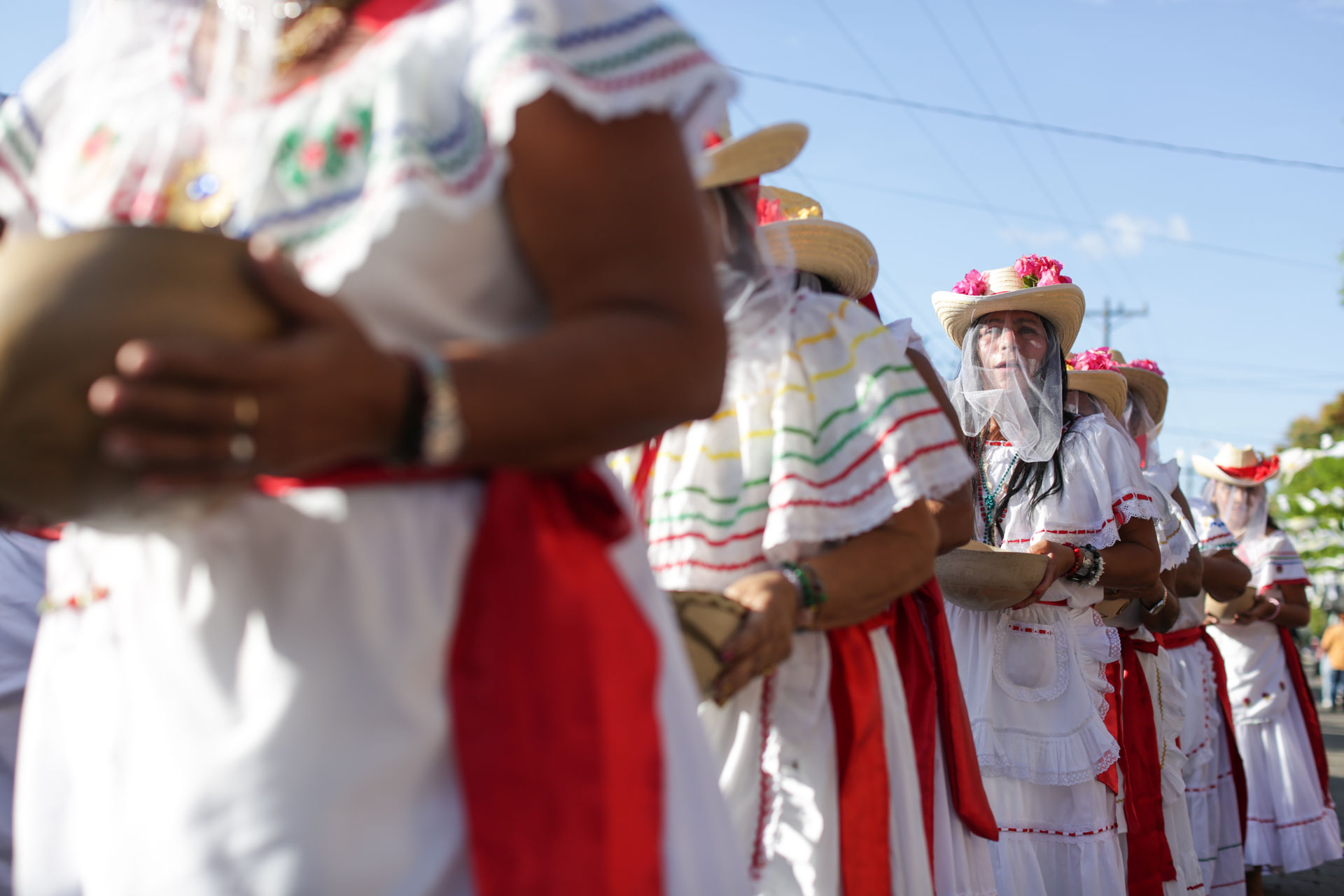
The white costume of the Promesano Indians is based on the typical clothing of the colonial era, when trade with Nicaragua revolved around cattle and textiles such as cotton, which was used to make clothing.Photo: César Arroyo Castro
Theater and art history professor Yolanda Briceño, from Santa Cruz, explained that some priests have understood that the Promesano Indians are part of the town’s identity but that others have deliberately attempted to do away with the tradition and brushed it off.
I think they are fully aware because the priests have studied, but not all of them have enough cultural capital to understand the manifestations of the towns’ popular art and culture,” said Briceño.
According to the book Rasgos de la Identidad Santacruceña (Traits of the Santa Cruz Identity) by writer Raymundo Brenes, among some people from Santa Cruz, “the fear persists that new priests who arrive in the parish, since they are not originally from the community, aren’t interested in promoting this popular demonstration and it will again be considered ridiculous and even pagan, as occurred at another time in history.”
The Voice of Guanacaste tried to find out the position of Santa Cruz’s priest, Yunner Briceño, but he said that he wouldn’t comment on the topic.
Dance, Music and Acting
Brenes’s book details that the dance consists of a group of people in pairs, with hats and veils that cover their faces, who sing and perform dances in front of the Holy Christ to fulfill a promise.
He also explained that the Promesano Indians represent a tribe with their respective hierarchical distribution. First are “the old men,” played by two men. When it is their turn to dance, they do so with exaggerated movements, although with a rhythm to the beat of a dance that is different from that of the rest of the tribe. Their role within the tribe has a comical nature.
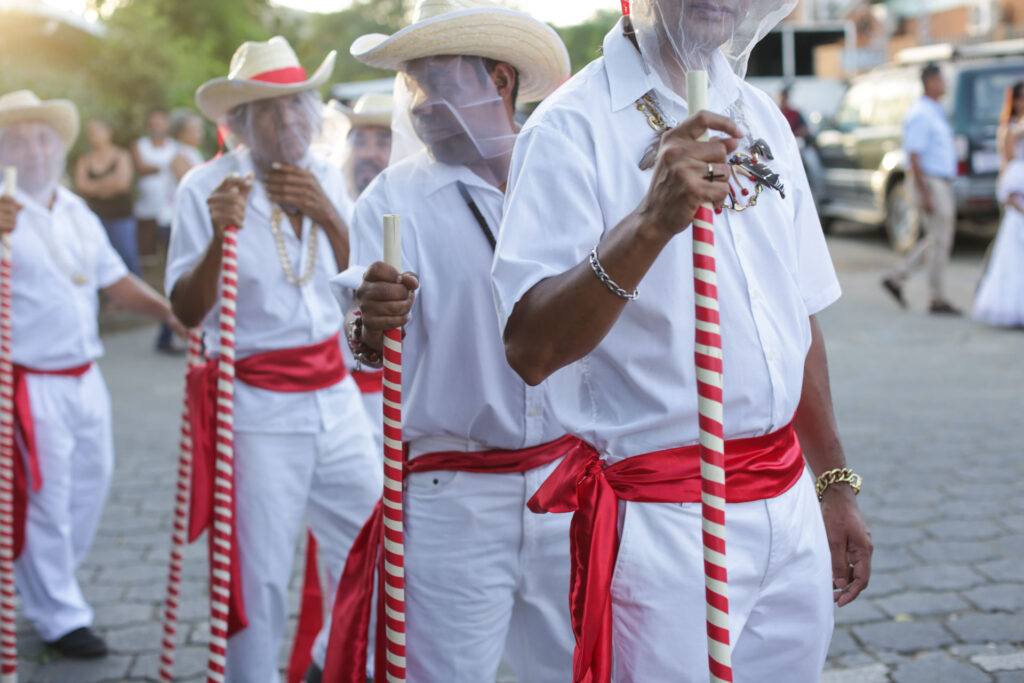
The men tap the ground with the stick, which represents the handspike used to plant corn.Photo: César Arroyo Castro
According to historian Briceño, the dance has a very defined script and within this story, the old men have the role of antagonists.
“Those who are evangelized, quote unquote civilized, go in front. They greet the image and go back without turning their backs. On the other hand, the others who aren’t yet evangelized [the old ones] are the funniest. They do turn their backs on it and get out of the ritual,” she explained.
One of them disguises himself as a woman to represent a woman from Santa Cruz, but this year, no one played this role because the person who was going to do it got sick.
Traditionally, he puts on hair made from cabuya (fique fiber that is used to make bags, hats and other products) and prosthetics on his buttocks so that he looks exaggeratedly voluptuous. These physical characteristics are part of the Afro heritage of the people of Santa Cruz: curly hair, wide nose, chocolate-colored skin, wide hips.
Those Africans also left their mark. Some things that we have perhaps kept hidden because we didn’t know how to read it at the time,” she emphasized.
The “captains” are in second place. These are the heads of the tribe, who lead the group by dancing and singing as a group or as soloists. The third group is called the “cumiches,” who are the children of the tribe. Their music and dancing are similar to the captains.
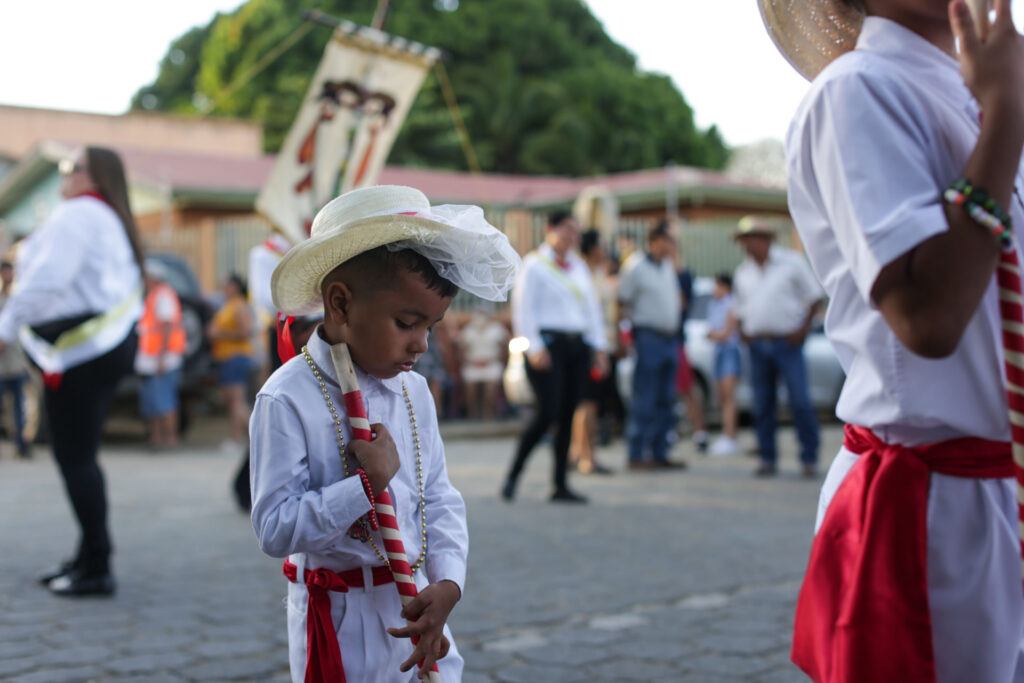
Isaias Moraga is five years old and has been participating since he was one. He is fulfilling a promise made by his mother, Enid, who entrusted him to Esquipulas so that he would have a successful surgery when he was six months old.Photo: César Arroyo Castro
Briceño explained that these types of traditions come from two aspects of Spanish medieval theater. The first was done in the church, with representations to spread the Catholic faith’s doctrine, but when they began to play the role of the devil and characters who weren’t blessed, they couldn’t do it inside the church and they were moved to the atrium. There, it merged with the other aspect, that of the popular theater that was produced at fairs.
Another important component within the tradition is music. Musician Gerardo Duarte, son of Santa Cruz marimba player Ulpiano Duarte, knows these songs very well. He has written different arrangements for these songs, one of them for Marimba Diriá.
“When I did the marimba version, what I did was collect all of the memories that are in my memory from when I played that with Marimba Diriá in those years of the 60s and 70s,” he recalled.
We remember the life of one of the most iconic musicians in the province 25 years after his departure.
Duarte explained that the songs of the Promesano Indians have characteristics of the Spanish Renaissance.
“They are a series of tunes that are concatenated. It’s not a single piece. That’s a heritage from the Spanish Renaissance. Music and singing in unison is a very European practice from the Middle Ages,” explained Duarte.
The musician added that this musical expression is anonymous. No one knows who composed it or how it came to Santa Cruz. Nor has there been a rigid instrumentation to perform the songs. “It was played with what there was,” he added.
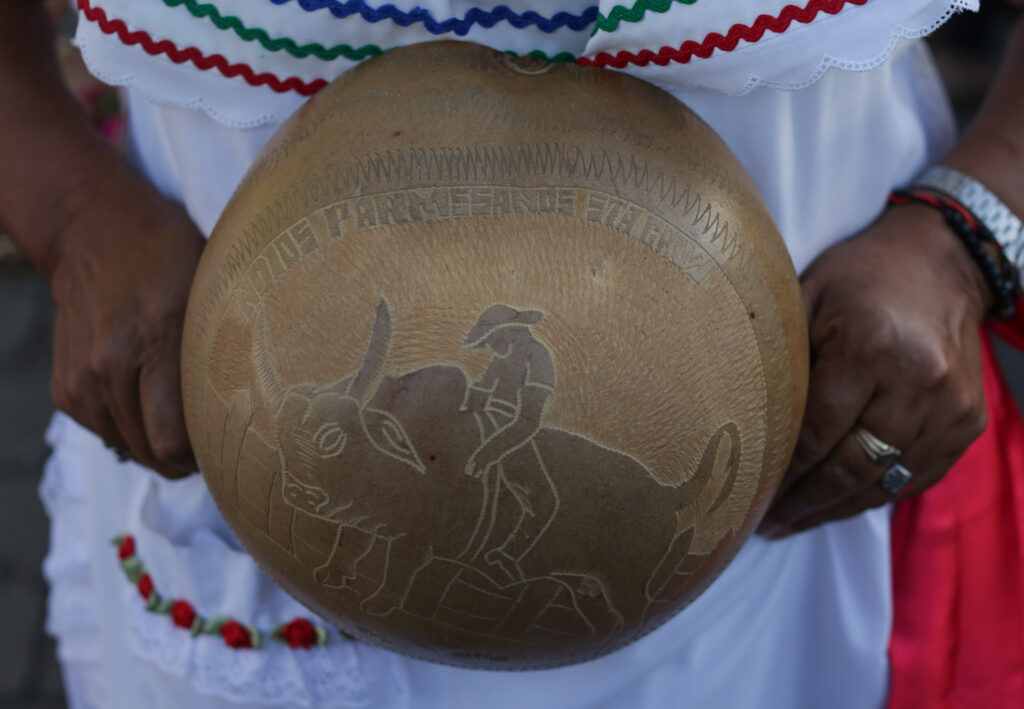
The men’s use of the stick and the women’s gourd bowls are necessary elements to keep the dance’s rhythm.Photo: César Arroyo Castro
This year “what took place” was enough to keep the tradition afloat. But it was hard to find a marimba, the characters of the old man and the old woman didn’t show up, the Promesanos
struggled to finance their outfits and Mary had a lot of problems getting those who were making their debut to manage to learn the songs.
So the Dance Doesn’t Come to an End
On December 2, 2020, the celebration of the Holy Black Christ of Esquipulas of Santa Cruz was declared an intangible cultural heritage of Costa Rica, but historian Yolanda Briceño thinks that the community and the local government need to take action to ensure a robust future for the the tradition of the Promesano Indians.
“What has happened in times past? It has been left up to volunteerism. ‘Let’s do it because it’s a promise and everyone bought their outfits and hats.” And if someone can’t, I think it needs to be institutionalized so that at least that base stays permanent,” said Briceño.
Other ways that she thinks the tradition can be reinforced is for the municipality to budget money for the tradition of the Promesano Indians. In addition, make young people aware of the tradition, produce a book about the dances and write down the music.
As a civil society, we owe them our support. Because that way the tradition isn’t lost and the declaration will have content,” she emphasized.
According to Santa Cruz municipal council member and member of the municipal Culture Commission, Jorge Rodriguez, they are evaluating what the best option is to provide resources to the Promesano Indians.
“There isn’t a specific budget line item, but they are contributed to. Years ago, the Esquipulas Foundation was created to be able to obtain resources [for all of the traditions that revolve around Esquipulas],” he mentioned and added that the Culture Commission’s idea is to reactivate the Foundation to funnel assistance to sustain the tradition.


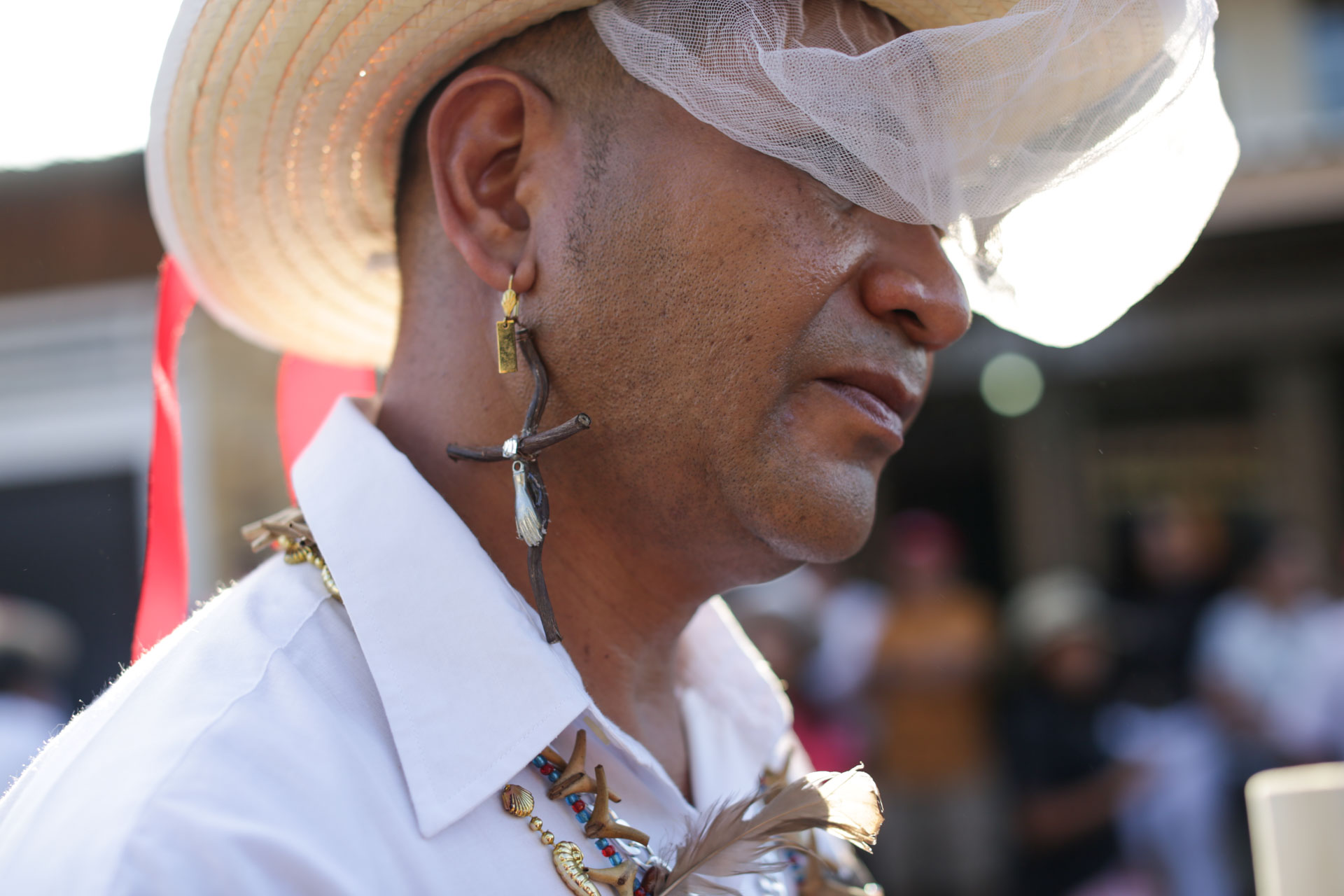
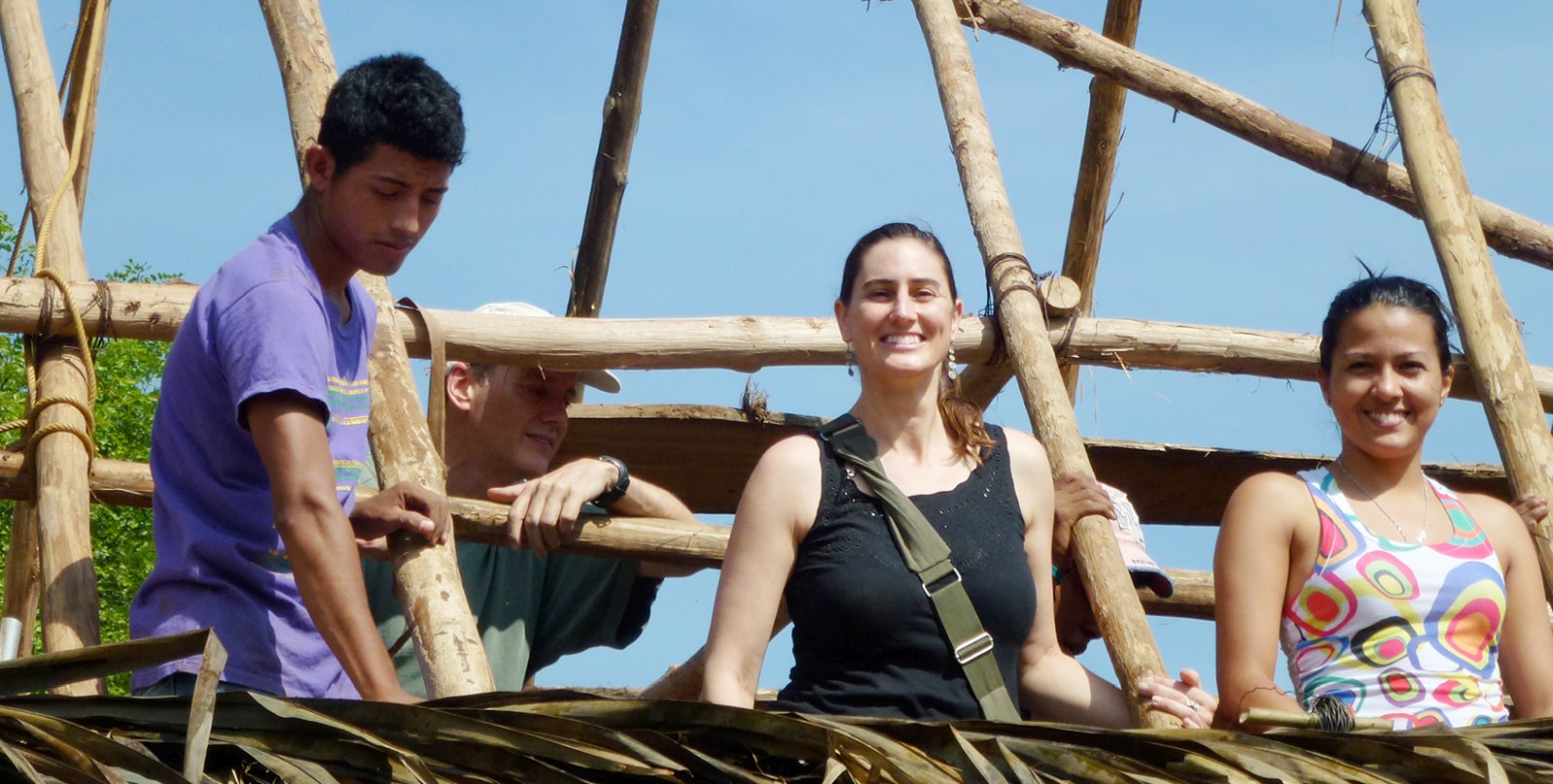
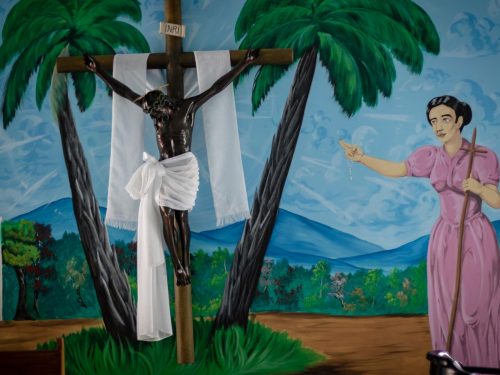
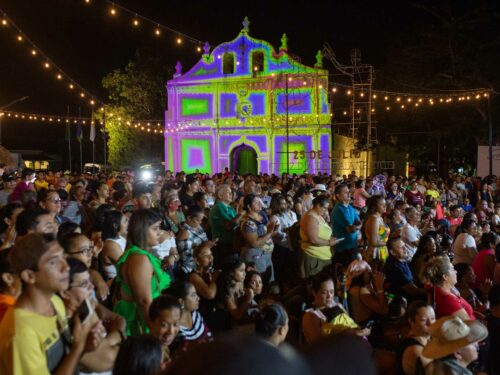

Comments